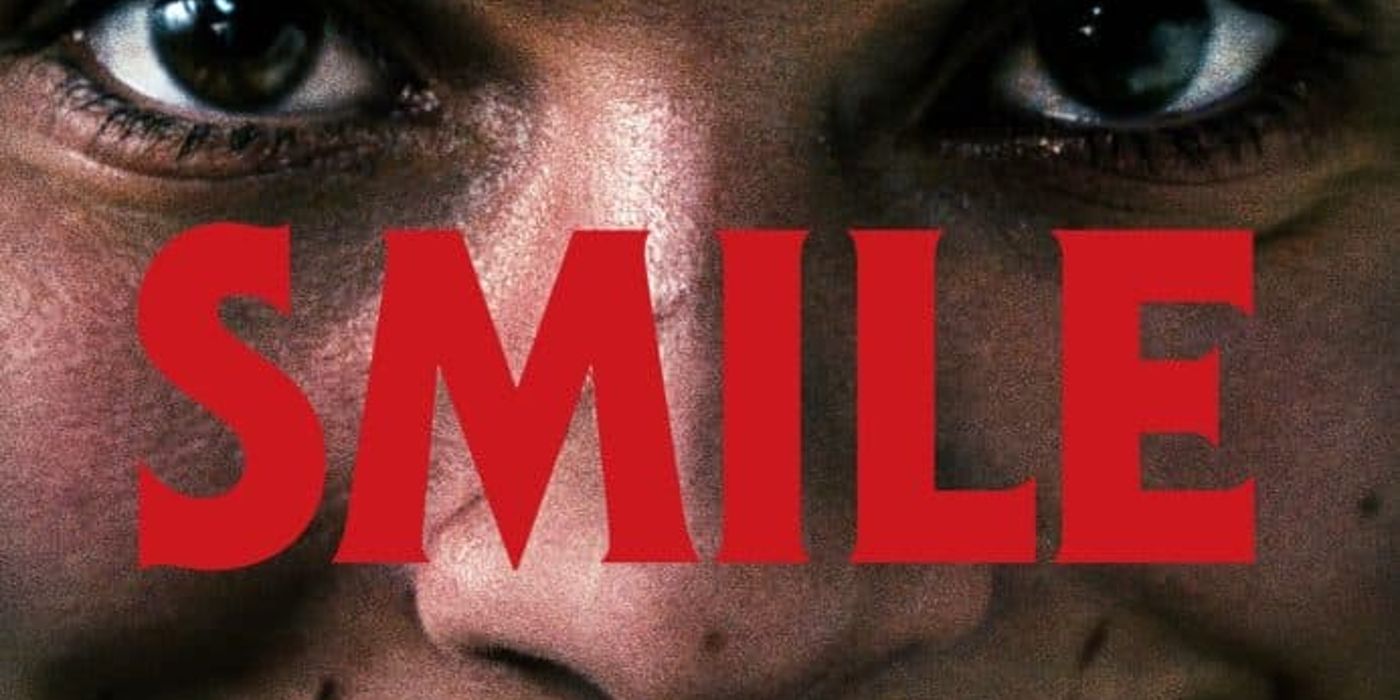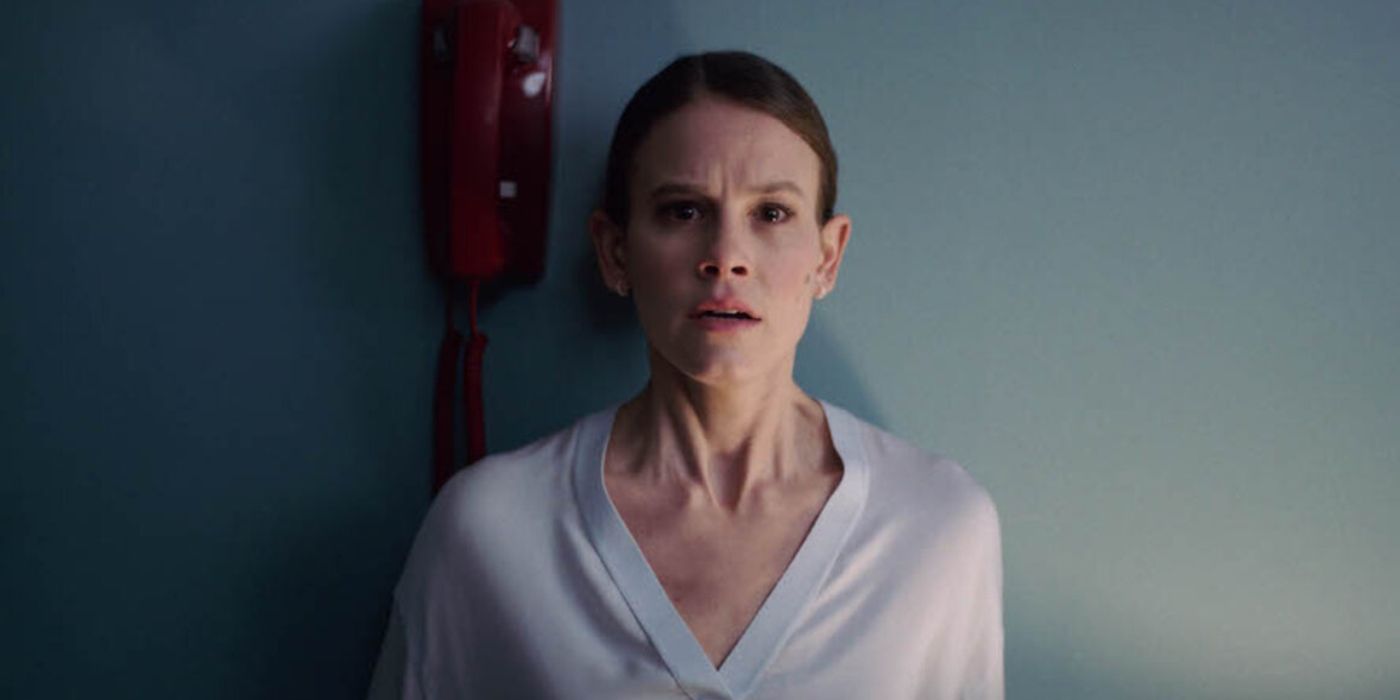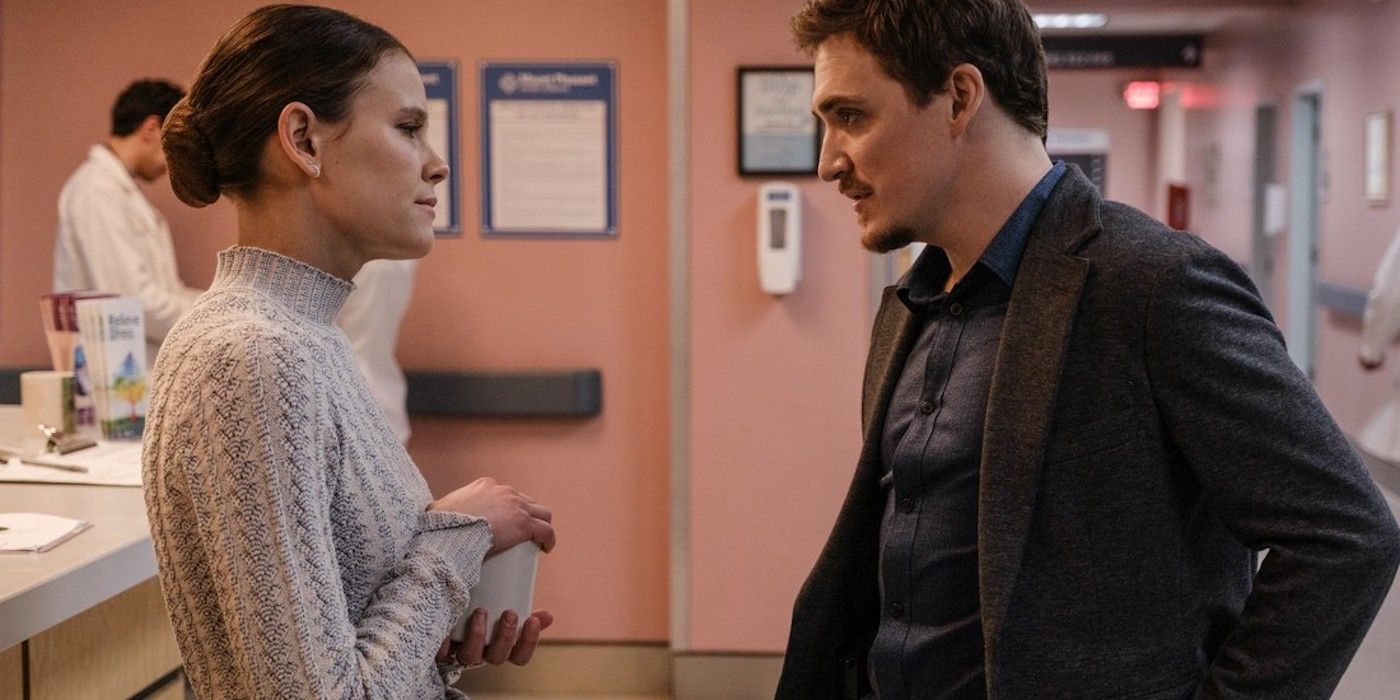The biggest horror movie smash of the year, Smile, written and directed by Parker Finn, opened to enormous success in theaters worldwide. Adapting Finn’s previous short film Laura Hasn’t Slept, the movie follows therapist Rose Cotter (Sosie Bacon), who inherits a curse that has her tormented and stalked by figures with unnatural smiles that threaten to eventually overwhelm and kill her. As Rose struggles to get her friends and family to believe her experiences, she desperately searches for a way to deal with the curse head-on before it’s too late.
In an exclusive interview with CBR to mark Smile’s release on home video and Paramount+, Smile filmmaker Parker Finn shared the behind-the-secrets in bringing the film to life. He also offered his own observations on horror and effective scares and reflected on the film’s incredible success.
CBR: I love the jump scares in Smile. They all feel well-earned. How was it staging these jump scares, escalating them over the film, and keeping the audience off-balance throughout the movie?
Parker Finn: I love a good jump scare. Some people you’ll never convince about jump scares, and that’s fine; you can’t litigate people’s tastes. I love jump scares when they’re done really well, and they need to be earned and hopefully are smart about their setup and payoff and manage to have a rug-pull feel to them.
When I was crafting the film, thematically, what is happening to Rose as a character is that she is being constantly traumatized and re-traumatized by this experience that she’s having by this supernatural element. I wanted the film to have the same effect on the audience. It’s wearing them down for where we’re eventually going but also finding new ways to reinvent how it’s scaring you. Hopefully, when they’re working best, it’s because the nature of the scares are mimicking what is going on for the character thematically.
What are some of your favorite jump scares in cinema?
I’m certainly not the first to say this, but the hallway scare in The Exorcist III is just a masterclass in that it all happens in a single frame. There are no cuts or anything in it. I think that’s an all-timer for me. In recent years, Mike Flanagan just pulled one off in The Haunting of Hill House. Deep in that series, there’s a scene that happens where two sisters are having a conversation inside of a car. I don’t remember the last time I shot out of my seat the way that I did, and that was watching it at home on Netflix; that’s a recent one that I love.
When expanding the short film into a full feature, how did you find the pacing when working with that much more creative real estate across a bigger canvas?
In adapting the short into a feature, one of the things that was really sort of the guiding light that carried the whole thing was the character journey. I always started with that. I was constantly pulling in the DNA of the short, all the tonal and executional things from the short that I loved, and some of those bombastic elements, but the character journey was really going to drive the film. What was so great in taking it to feature was spending more time with the character, really going down that path with her, and having the opportunity to ground her as real in an honest place before she goes on this journey and making sure all that works before we start layering in the horror elements.
In assembling your cast with actors like Sosie Bacon and Kyle Gallner, how was it leaning into their strengths as you observed them on set?
A big part of filmmaking, obviously, is casting, and I knew that the whole film was going to hinge on who we cast as Rose. I’m so excited and thankful that Sosie and I got the opportunity to work together. That character is pretty much in every scene. The whole thing is tied so close to her subjective, and she’s really got to go to these incredibly heightened places that need to feel honest; as outrageous as they are, they need to be believable. That was really important, and surrounding her with people who you might not expect to see in these roles or this movie in a way that ground everything before it goes to these incredible places. I loved working with this whole cast; I’m very lucky I got everyone.
I was talking to Kyle last week, and he said one of the things that attracted him to the project was its ending. Do you think the horror genre works better with a downer ending, letting the audience know not everything is going to be okay?
It’s hard to say. I think you can have all these debates and discussions, but that all stops with, “Did the movie work?” That’s the most important thing. I think there are lots of different approaches, and for me, the ending was very important to me and existed very early on in the development process. It was part and parcel with the idea of this horror story I wanted to tell that was not going to pull any punches. It was going to pull out the rug from underneath you and be an absolutely traumatizing experience to watch.
Also, in thinking about the audience, the character, and this really emotional journey that we’re going on, I wanted to make sure there was an emotional catharsis that happens before the ending. That felt like the character and the audience deserved it, and I wanted to make sure that we got there. I was just fascinated by taking it to its worst logical conclusion and this idea that, despite our best efforts, sometimes there are these inevitable forces of nature that are just evil and can be overwhelming.
How was it developing the sound design? That really keeps the tension going in this film, too, and how was it working on that aspect of the production?
For the sound design, I worked with the sound designer Dan Kenyon, who was actually the sound designer on my short film Laura Hasn’t Slept, bringing him in early in the process. That soundscape really is a mix of design and Cristobal Tapia de Veer’s score, and we brought him in early during prep as well. We were having so many different conversations about what this soundscape was going to feel like. It was important to me that the sound almost feels like its own character in the film, and we avoided things that felt trope-y or obvious in favor of something that could really get under an audience’s skin and be surprising. I love sound; it’s one of my favorite parts of the journey.
The other major element is the cinematography and production design, with almost ‘60s pastels in some scenes. How was it developing the look of the film with cinematographer Charlie Sarroff and production designer Lester Cohen?
I wanted to avoid any overt horror tropes for at least 95% of the movie and stay away from anything that was gothic or covered in cobwebs. I wanted the horror to come out of the context and the discordant nature of what you’re seeing and experiencing. We talked a lot about wanting to create a world that reminded us of our world, but there is just something that is ever so slightly off, and then it leans into this feeling of liminality. From the opening of the film, it just feels like you’re existing inside of a nightmare, and that was definitely important. It’s how we shot it and did the production design and costume design coming together with the sound as well.
Smile is the biggest horror movie of the year, and it’s going up against movies like Halloween Ends and Scream. How was it making the jump from streaming to theatrical, and how has the fan response been?
It was incredible! I was beyond grateful just for the opportunity to get to make a film for a studio who believed in me and this project enough to greenlight us and let us make it. When the decision happened to go with a theatrical wide release, that was definitely a pinch-me moment. I love the big screen, big sound, and communal experience; that’s how I fell in love with movies. Watching movies at home is also amazing. Some of my favorite films I watched at home for the first time, and they still became my favorite films, but getting to do it theatrical was totally a dream come true.
Having audiences respond to the film in the way that they have, the connection they seem to have with it, and the way that they’ve embraced it. That’s been far and away and the most satisfying part of the whole experience. The whole point is to make movies for audiences, and hopefully, I’ll be able to keep doing that!
Written and directed by Parker Finn, Smile is available to stream on Paramount + and to purchase on digital HD.




.jpg)